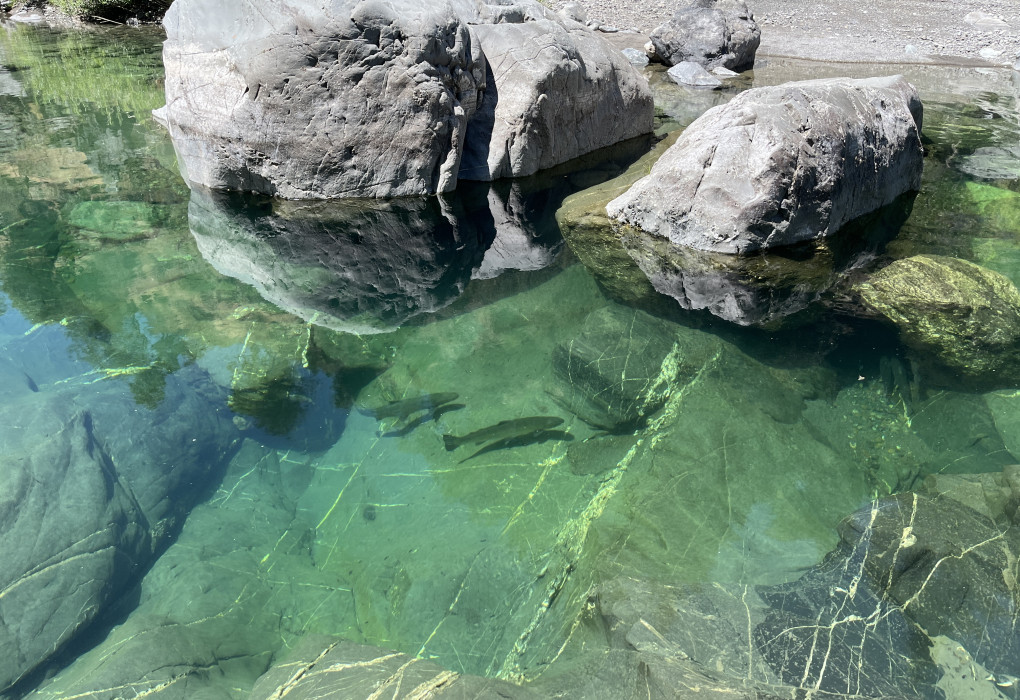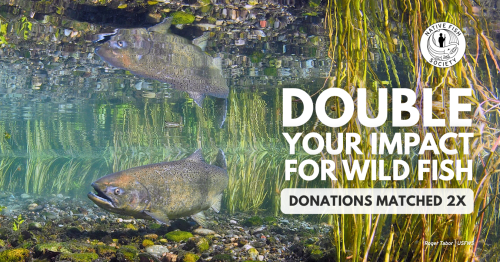StEELhead Discoveries Series - Part 19: August 2025
*This is Part 19 of an ongoing series on the campaign to Free the Eel and efforts to better understand and revive the iconic steelhead in the Pacific Northwest by Native Fish Society Fellow Samantha Kannry. View all parts of this series HERE. Additional parts and updates will be posted over the next several months. Stay tuned!
~ ~ ~ ~ ~ ~
Late July found me returning to a place that feels like home, the upper Middle Fork of the Eel. I had conducted the Middle Fork Eel summer steelhead dive survey for ten consecutive years, from 2010 to 2019. I spent the same ten years doing various other surveys, research, and monitoring in the basin. These past five summers have taken me away from the Middle Fork to different locales. I am grateful to have snorkeled and waded through so many new and lovely creeks, but there is something unique about returning home.
We spent four days hiking around 20 miles on the Middle Fork Eel. We began at one currently impassable set of boulder roughs and ended below another that is seasonally passable. In between, we snorkeled with hundreds of hulking summer-run steelhead, many who might be referred to as “total toads”. Some pools had a solitary individual or two, hiding in their depths, while others had 60 or 80 anadromous adults stacked near cold seeps. Each night we slept on the sandy banks of packed pools, lulled by the gentle current, and awoken by the slap of sturdy caudal fins on the water at dawn. We spent our days hopping from boulder to cobble, stopping to snorkel a pool, cruising over red chert shelves, swimming with our bags through long canyon-lined pools, and then hopping along again.
Summer-run steelhead wait out the long, hot summer months in many of the same pools year after year. Due to its low summer flow and unique geology, many of the pools on this stretch of the Middle Fork Eel have significant thermoclines (2-7 degree Fahrenheit difference between the surface and bottom temperatures), or substrate-level cold water seeps. These cooler sites provide a refugia and tend to be where higher numbers of fish are concentrated.
On the third afternoon of our survey, dark thunderheads crept in from the north and rumbled over us. Once the rain arrived, we tried to wait out what we assumed would be a brief summer freshet. During the ensuing hours of heavy downpour, drops became trickles, trickles became rivulets, rivulets became muddy streams, and these muddy streams reduced the visibility in the river from thirty feet to a few inches. As the rain eventually subsided, we watched a bear meander along the bank toward us and pause for a swim until it heard our giggles and retreated. In the morning, we awoke to enough visibility to glimpse the “total toads” darting around in their refreshed states. Not enough visibility, however, to accurately count them. We would have to return later when the turbidity has declined to finish the dive count. In lieu of a snorkel survey, we continued our own meander downstream, observing many fish from the bank and soaking up the warm sun.
When you walk a river that you have passed so many days in and around, your body relaxes, and your mind is at ease. Your feet may slip, but they know the rocks and how to glide over them. The water may be cold on your core in the morning, but your belly awaits the radiating heat of mid-afternoon. The slow pace through the boulder gardens may seem daunting, but your legs feel the miles passing too quickly. Your soul remembers a river that is your home.
In other news, PG&E recently submitted their Final License Surrender Agreement for the Potter Valley Project. One more box checked on the way to dam removal, though still unknown hurdles to overcome. Stay tuned for opportunities to comment on the proposal in the coming weeks.
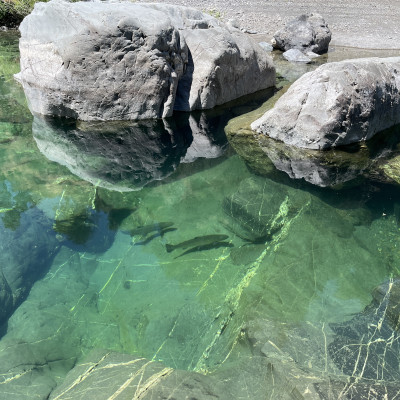
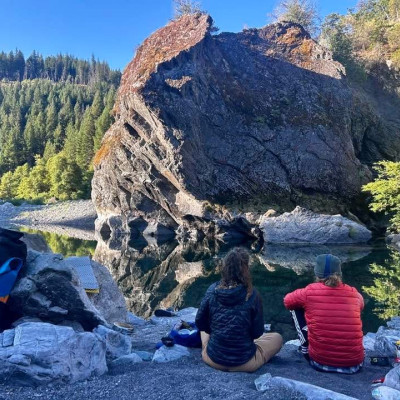
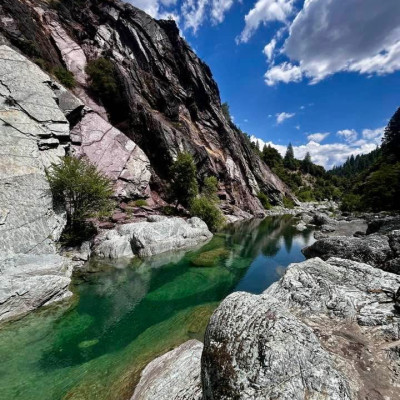
Photos: Braden Herman
~~~~~
About the Author:
Samantha Kannry has been monitoring, studying, and swimming with summer-run steelhead in the Eel River and other rivers of Northwestern California for the past thirteen years. She joined NFS as a volunteer in 2015, then became a fish genetics fellow in 2020.
While it has been clear to the native peoples of the region since time immemorial that summer-run steelhead and the congeneric spring Chinook are separate populations, not everyone else sees it so clearly. Her research has focused on using conservation genetic tools to elucidate the distinction between summer and winter-run steelhead.
When not minking (a combination of hiking, swimming, snorkeling, sliding, shimmying, and boulder jumping) down rivers, she is usually growing and eating fruit, moving manure at Caudal Fin Farm, or bike touring distances large and small. All working towards re-establishing the inherent continuity between rivers, land, and people.
Read StEELhead Discoveries Part 1 - 18 HERE.
